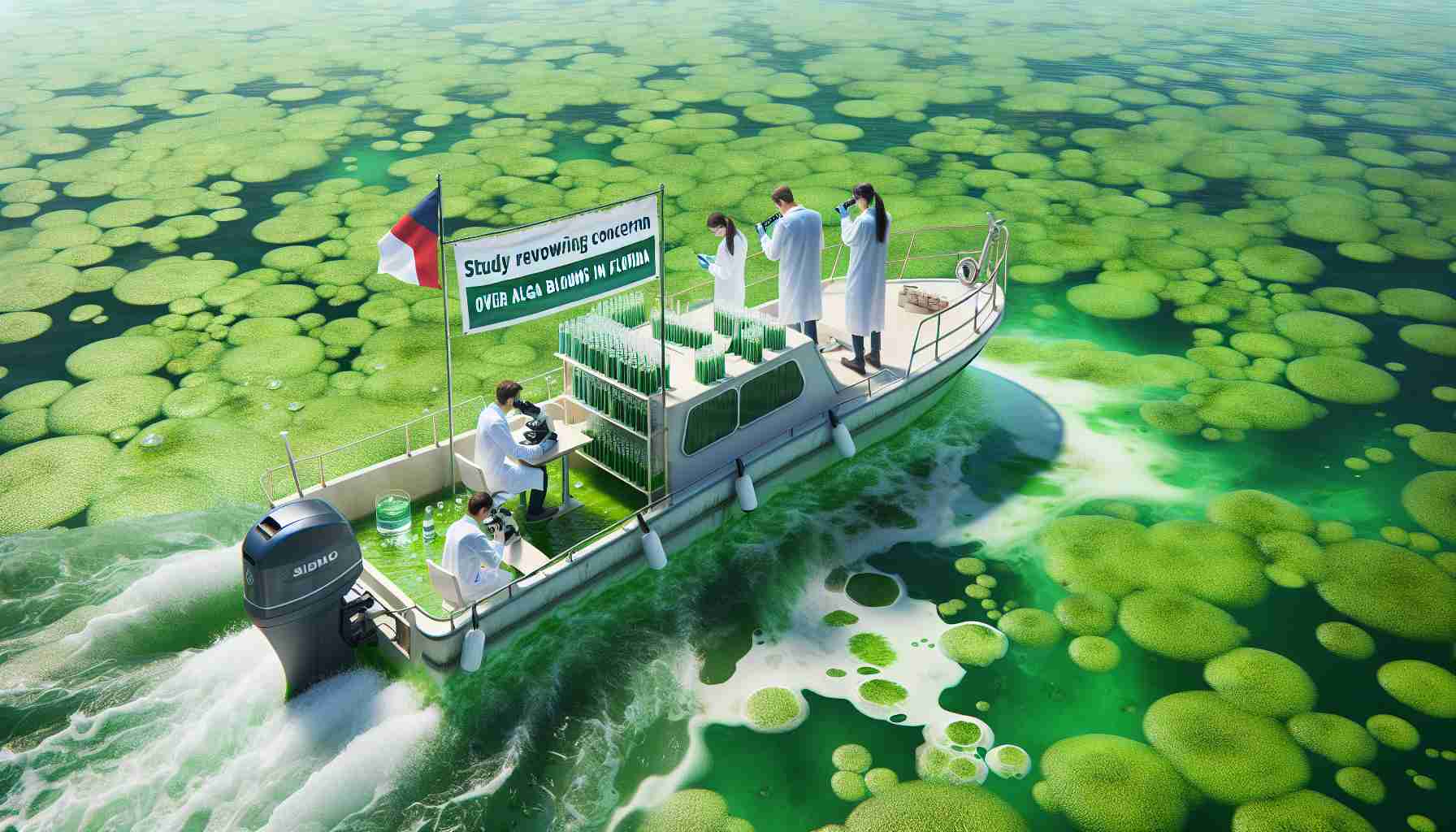Satellite data from Florida’s Gulf Coast has unveiled a concerning trend in the proliferation of algal blooms, posing threats not only to marine life but also to human health. Following recent environmental events, satellite observations have indicated a surge in chlorophyll levels, a potential precursor to red tide incidents in the region.
Research conducted by the U.S. Department of Energy highlights the connection between powerful tropical cyclones and increased chlorophyll levels in seawater, leading to the formation of algae blooms. These blooms, while essential for marine ecosystems, can also have detrimental effects, especially when certain toxic algae species like Karenia brevis are involved.
Experts are closely monitoring the situation, with concerns growing over the impact on marine wildlife, particularly the vulnerable manatees. The recent red tide bloom has already caused significant casualties among these gentle giants, with over a hundred fatalities reported in a matter of months. Wildlife biologists emphasize the urgent need for intervention to protect the remaining manatee population from further harm.
In addition to its effects on marine life, red tide poses health risks to humans. Exposure to the toxins released by harmful algae can result in respiratory issues and cognitive impairments. Efforts are underway to mitigate the spread of red tide and safeguard both marine ecosystems and public well-being in the affected regions.
New Findings on Algal Blooms in Florida Waters Spark Concerns and Complexities
Recent developments in the study of algal blooms along Florida’s Gulf Coast have brought to light additional factors that contribute to the proliferation of these harmful phenomena. As researchers delve deeper into the complexities of this issue, new questions are arising that highlight the challenges associated with mitigating the impact of algal blooms on both the environment and public health.
What additional factors contribute to the growth of algal blooms in Florida waters?
Recent studies have revealed that nutrient runoff from agricultural activities and urban areas plays a significant role in fueling algal blooms in Florida waters. Excess nutrients like nitrogen and phosphorus act as a fertilizer for algae, leading to rapid growth and the formation of blooms. Climate change-related factors, such as rising sea surface temperatures and changing precipitation patterns, also exacerbate conditions favorable for algal bloom development.
How do algal blooms impact the broader marine ecosystem beyond visible effects?
While the visible impact of algal blooms on marine wildlife is well-documented, there are lesser-known effects on the local ecosystem. These blooms can deplete oxygen levels in the water, leading to hypoxic or anoxic conditions that are harmful to fish and other aquatic organisms. Disruption of the food chain and alteration of habitat conditions further compound the long-term consequences of algal blooms on ecosystem health.
What are the key challenges in effectively managing and preventing algal blooms in Florida waters?
One of the primary challenges in addressing algal blooms is the interconnected nature of the factors contributing to their growth. Implementing successful management strategies requires a multi-disciplinary approach that considers the intricate relationships between nutrient sources, environmental conditions, and biological interactions in the marine environment. Coordinating efforts among governmental agencies, research institutions, and local communities is essential to develop comprehensive solutions that address both the root causes and the immediate effects of algal blooms.
Advantages and Disadvantages
Advantages: Increased research and monitoring efforts provide valuable insights into the dynamics of algal blooms, enabling more informed decision-making and targeted interventions. Public awareness of the issue has also heightened, leading to greater public engagement and support for conservation initiatives.
Disadvantages: Despite progress in understanding algal blooms, effective mitigation strategies remain elusive due to the complex nature of the problem. Balancing the needs of various stakeholders, including agriculture, tourism, and conservation interests, presents a significant challenge in implementing sustainable solutions to prevent and manage algal blooms in Florida waters.
For more information on algal blooms and related environmental concerns, visit Florida Department of Environmental Protection.



















